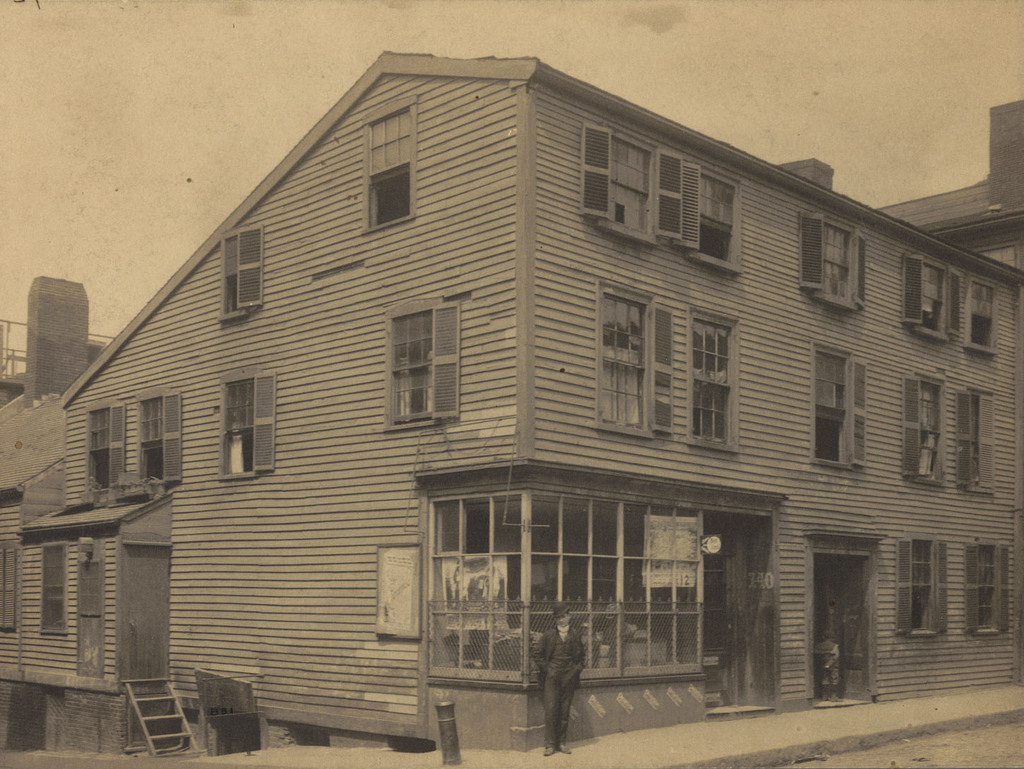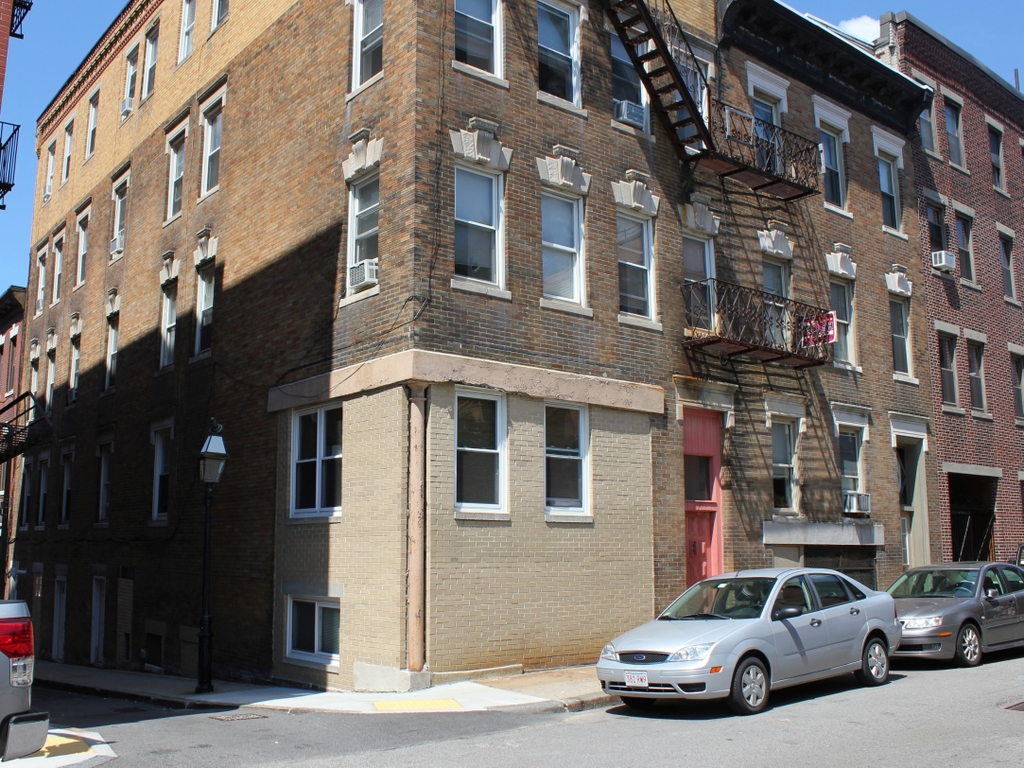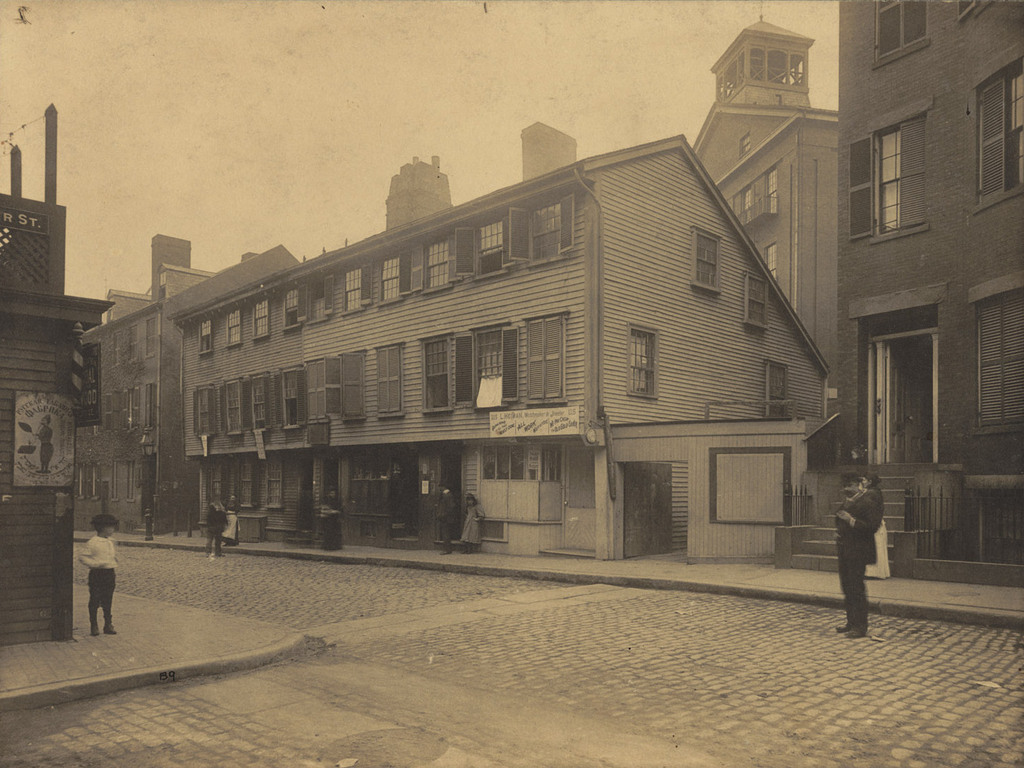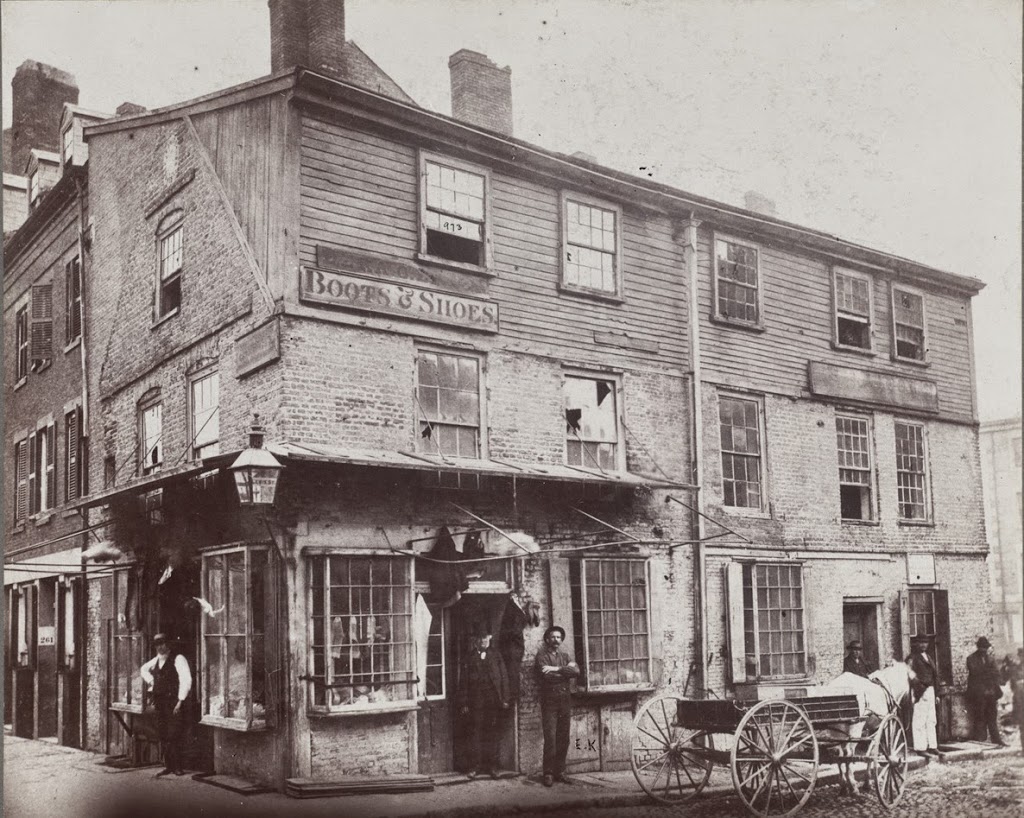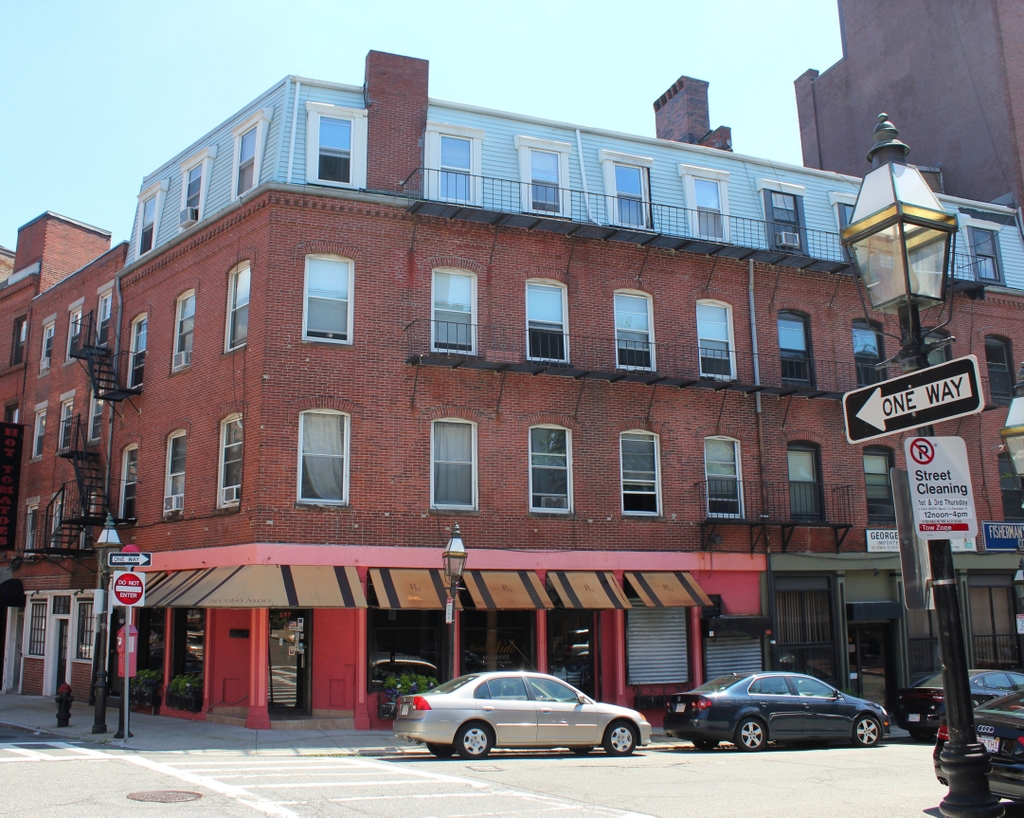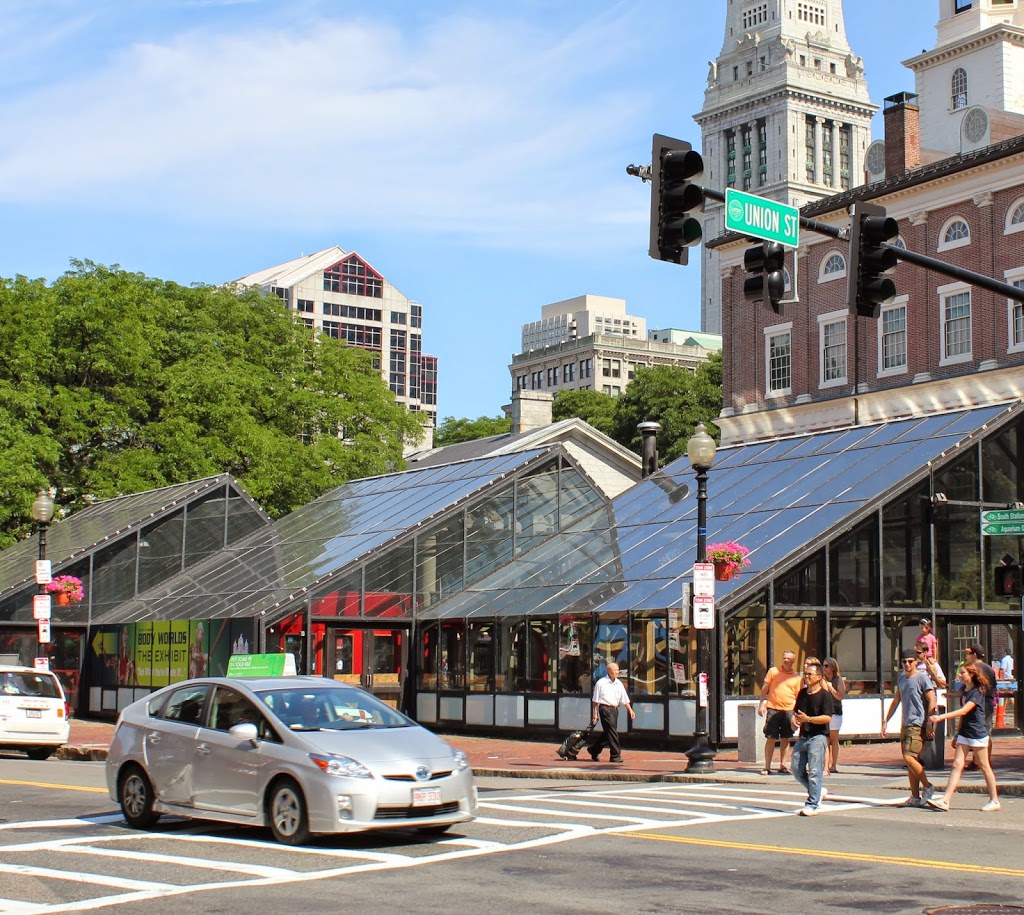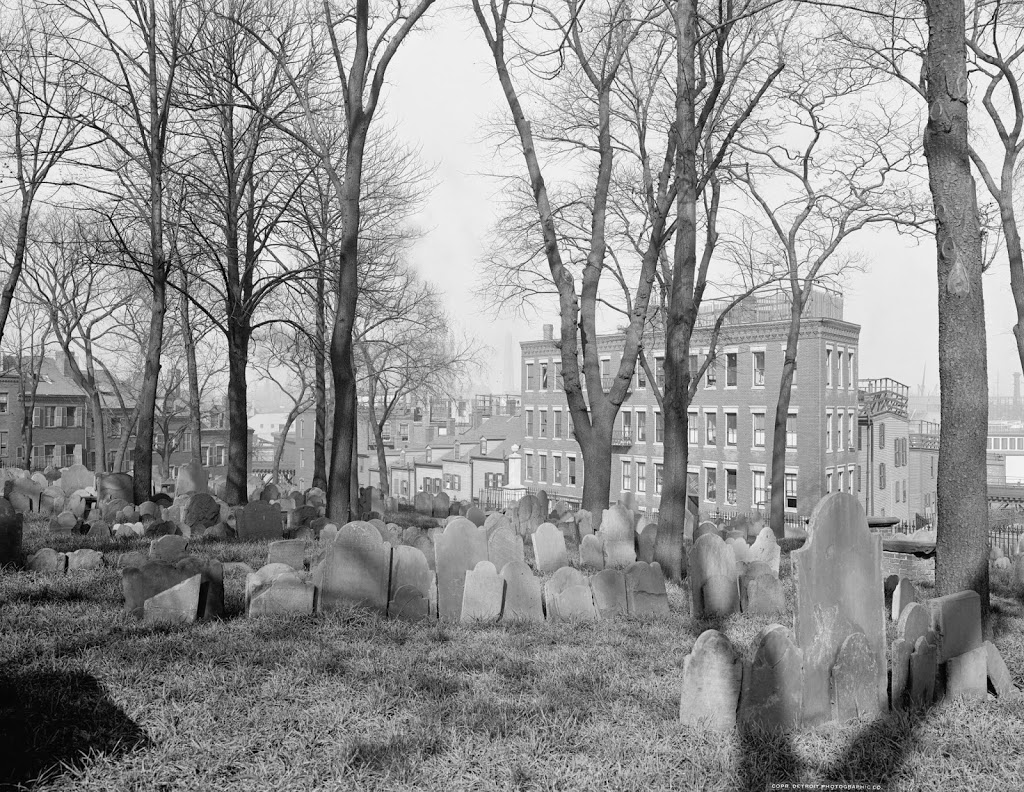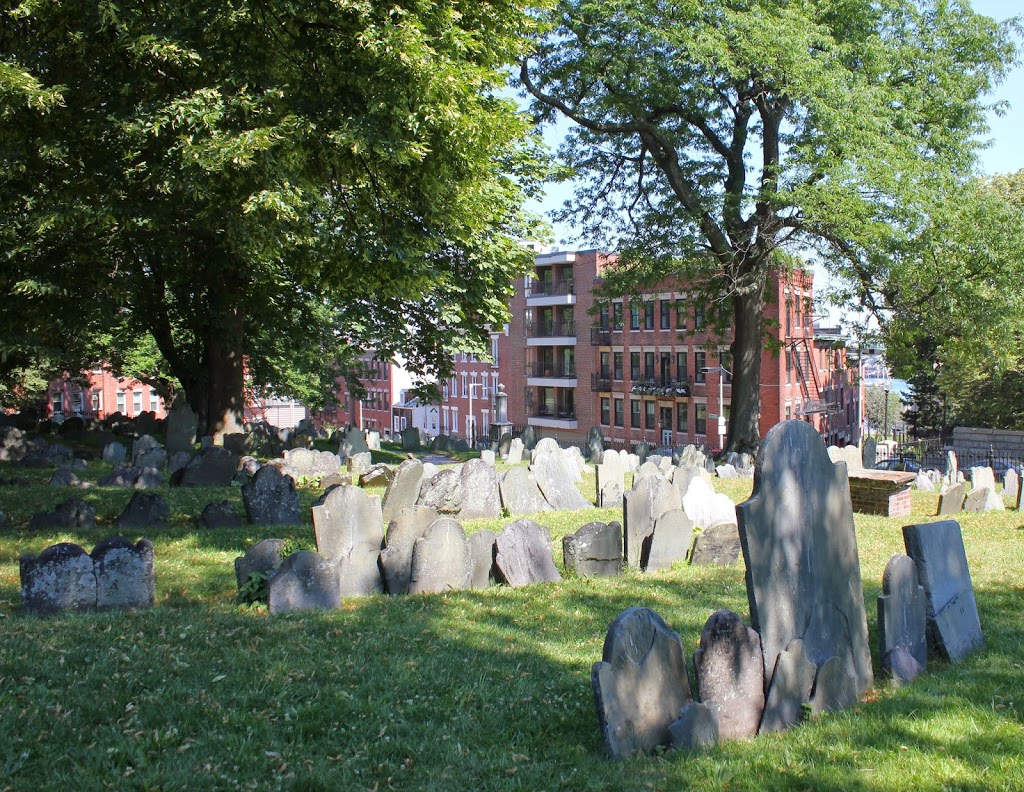The Ebenezer Hancock House in Boston’s Blackstone Block, before 1886. Photo courtesy of Boston Public Library.
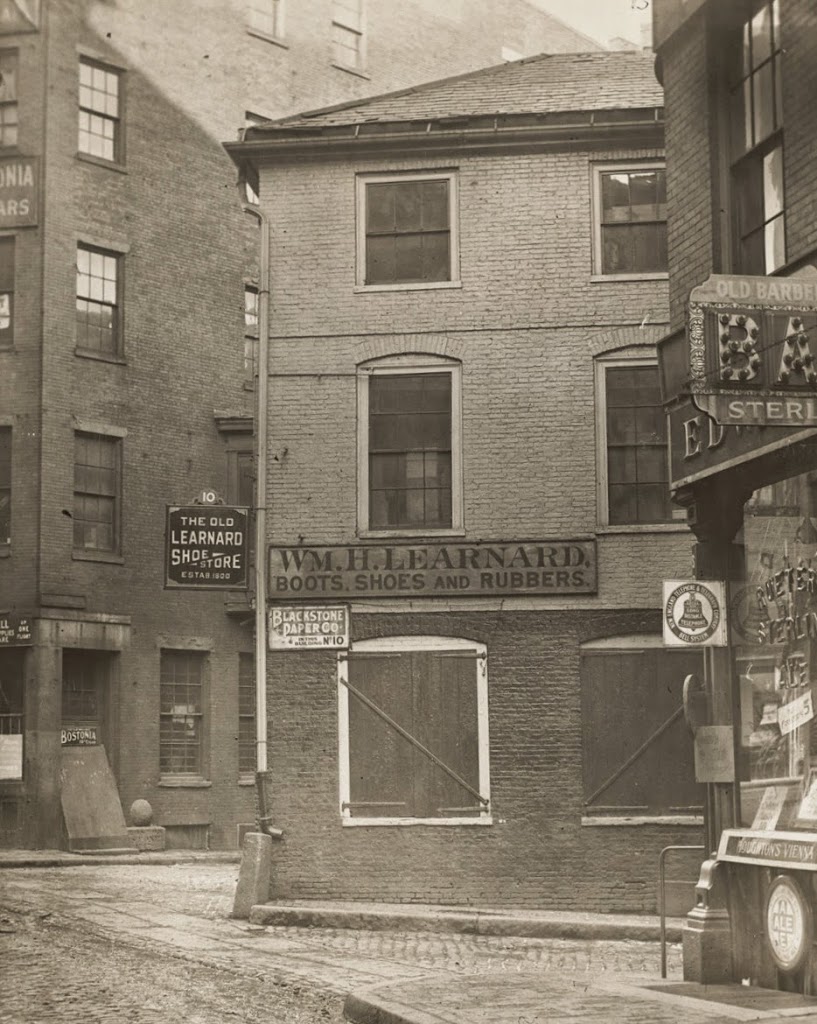
The scene in 2014:
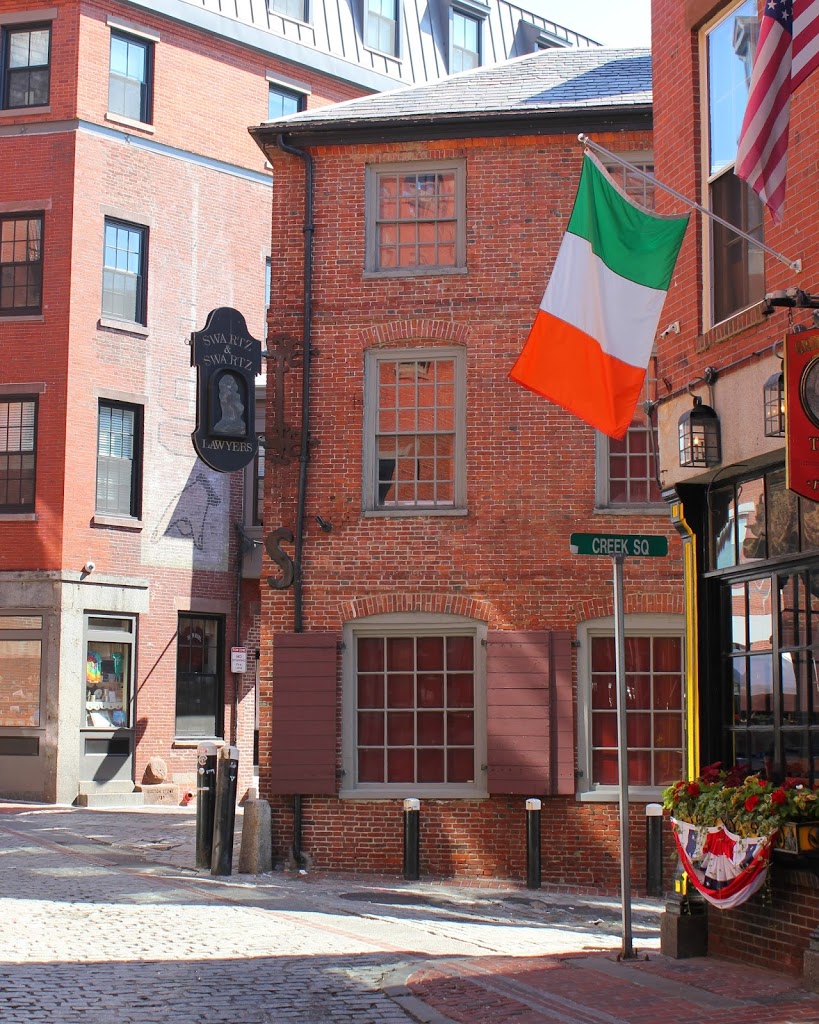
Boston’s Blackstone Block is in an odd location; the collection of historic 18th and 19th century buildings and narrow, 16th century alleys sits as sort of a time capsule, surrounded by modern development. On one side is the Government Center area, where street scenes like this were demolished wholesale and replaced with concrete monoliths and open paved areas, and on the other side is the Central Artery, where the elevated highway was originally built in the 1950s before being put underground as part of the Big Dig.
However, the Blackstone Block appears virtually unchanged in over 125 years. A few notable landmarks are visible in these photos, including the Ebenezer Hancock House in the center. In the 19th century, it was home to William H. Learnard’s shoe store, who operated out of the building from the 1820s until 1886. He wasn’t the only person to own a shoe store here, though. The building functioned as a shoe store from 1798 until 1963, and is today used for offices. Originally, though, it was a house, and was built around 1767 and later owned by Ebenezer Hancock, the brother of John Hancock.
Also of note in this photo is the Boston Stone, seen in the background, embedded in the wall of the building to the left of the Ebenezer Hancock House. Supposedly, this stone, which actually predates the circa 1835 building, was once used as the zero milestone for Boston, but this doesn’t appear to be likely. The building, though, is probably the one thing that has changed the most since the first photo was taken. At some point in the mid 20th century, the building was trimmed down to just three stories. Today, it has all of its floors again, but this is a recent addition; photos in this post, from the other side of the building, show that the extra stories weren’t there in 2011.

